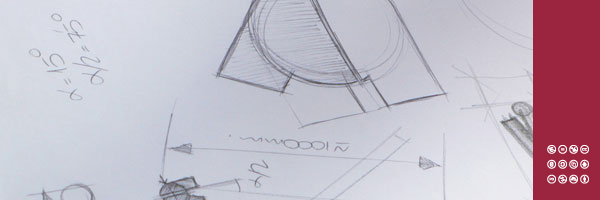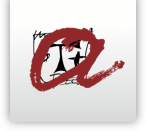Frequently asked questions

15.‐ What are the consequences of not respecting intellectual property rights?

1.‐ Since the URV virtual training environment (Moodle) is a private space between teacher and students, can any material (book, article, document ...) be put in it regardless of whether it is subject to property regulations intellectual or not?
No, the use of material in the URV virtual training environment (Moodle), regardless of its privacy, must necessarily respect the intellectual property rights of the material.
2.‐ If I am the author of a material (book, article, document ...), can I scan it and make it available to students in the URV virtual training environment (Moodle)?
Not necessarily. If, as the author, exploitation rights have been exclusively assigned (for example, when publishing a book the exploitation rights have been assigned to the publisher), written permission must be obtained from the owner of the exploitation rights. It is necessary to indicate, however, many journals allow authors to use the publications for teaching.
3.‐ If the author of a material (book, article, document ...) gives me permission, can I make his work available to my students in the URV virtual training environment (Moodle)?
Not necessarily. If the author has exclusively assigned the exploitation rights (for example, if by publishing a book he has transferred the exploitation rights to the publisher), written permission must be obtained from the owner of the exploitation rights.
4.‐ The digital magazines that the URV acquires, can they be published in the space of the subject in the URV virtual training environment (Moodle)?
With regard to the use of articles on teaching websites and electronic or printed dossiers, the pertinent solution is to link to the article, but not to download it and put it in the subject space. In addition, the source of the linked material must always be referenced and cited.
In case of doubt about an article or a specific magazine, it can be consulted through the service Pregunt@.
5.‐ Can the journals in paper format that the URV acquires be scanned and published in the space of the subject in the Virtual Training Environment of the URV (Moodle)?
No, since the purchase of the paper format does not imply exploitation rights. It could only be done in the case that the owner of the rights, generally the publisher, clearly and expressly specified it. In case of doubt about a specific article or magazine, you can go to Pregunt@.
6.‐ Even if a work has the rights reserved, can I scan and publish a part for the students in the space of the subject in the virtual environment for training of the URV (Moodle), based on the limit of quote or teaching illustration?
Relying on the right of appointment, even if the work is protected, it can be done. However, only fragments can be entered, and always as part of a material prepared by the teacher. The fragments used should have the objective of validating or supporting the teacher's speech, but they can never constitute the speech that is made available to the students: said fragments must be correctly cited and referenced.
It is also possible to introduce an isolated work of a figurative plastic or photographic nature in your own material, as long as it is used as a quotation or for analysis, comment or critical judgment.
Regarding the illustration of teaching, it is possible to reproduce, distribute and make public communication of small fragments or an isolated work of a figurative plastic or photographic nature, as long as they do not come from a textbook or university material, and that these fragments are used to illustrate educational activities in classrooms. Musical scores, single-use works, or compilations or groupings of fragments of works or isolated works of a plastic or figurative photographic nature are not the object of this teaching illustration right.
As a result of the contract signed by the URV with CEDRO, a chapter of a book, an article in a journal or equivalent extension of a publication assimilated to a journal (for example, can be freely deposited in the space of the virtual training environment (Moodle) subject). example a miscellany), or an extension equivalent to 10% of the total of a work, always citing and referencing the source to respect the authorship.
7.‐ If a material (book, article, document ...) does not state whether or not it has the reserved rights, can I use it freely?
No, if a material does not indicate it, it should be treated as if it had all rights reserved.
8.‐How can I know if a material does not have any reserved rights and, therefore, I can use it freely?
The following is public domain material:
- Content of the official gazettes DOUE, BOE, DOGC, BOP, FOU ...
- Text of the decisions of jurisdictional bodies collected in public databases (example: CENDOJ). Statements retrieved from private databases are copyrighted (example: ARANZADI WESTLAW).
- Works that, due to their antiquity, are in the public domain, that is, when the author has died more than 70 years ago -or more than 80 years in the case of European authors who died before 1987-. You can check this possibility at the URL: http://www.outofcopyright.eu. You must bear in mind that a derivative work (translations, adaptations, compendia ...) has its own rights, different from the original (for example a translation of a Shakespeare play).
If a material is used, even if it does not have any reserved rights, the source must always be referenced and cited in order to respect the authorship. The moral right of recognition never expires.
9.‐ If a work is under a Creative Commons license, can I scan it and make it available to my students in the URV virtual training environment (Moodle)?
The content published under a Creative Commons license may have reserved rights that must be respected. These rights vary depending on whether the material is covered by one or the other of the six Creative Commons licenses. However, the use made in the URV's virtual training environment (Moodle), that is, reproducing and communicating publicly without commercial purposes, is allowed in any of the six licenses.
Specific information on what each of the six licenses allows can be found at http://creativecommons.org/licenses/.
It is necessary to remember that, if a material is used, the source must always be referenced and cited in order to respect the authorship.
10.‐ If a material is available on a public website, can I download it and make it available to my students in the URV virtual training environment (Moodle)?
No, the reserved rights of the materials must necessarily be respected. What is allowed is to link them from the URV virtual training environment (Moodle) -which is displayed in a new window, making it clear in this way that this material is foreign-; in any case, the source must be referenced and cited. However, if the link is made and a notification is received from the owner of the exploitation rights of the material stating that the linked website has published the material without their consent, then the link must be removed.
On the other hand, it should be taken into account that it is considered an ethical practice not to directly link the document from a web page, but to link the main access page of the web where the document is located. Some websites even state that they do not allow direct linking of their documents (deep linking).
11.‐ If a material is available on a public website, can I link it from the subject space in the URV virtual training environment (Moodle) and thus make it available to my students?
Yes, but the link must be made in such a way that it is displayed in a new window and always referencing and citing the source. If you make the link and you receive a notification from the owner of the rights to exploit the material stating that the linked website has published the material without your consent, then the link must be removed.
On the other hand, it should be taken into account that it is considered an ethical practice not to directly link the document from a web page, but to link the main access page of the web where the document is located. Some websites even state that they do not allow direct linking of their documents (deep linking).
12.- Can I post student works available to other students in the URV virtual training environment (Moodle)?
This action requires the prior authorization of the student author of the work and to reference it and cite it in order to respect the authorship.
13.- Can I introduce an image found on the internet in a teaching material and post the material in the URV virtual training environment (Moodle)?
The images, drawings and photographic works (not mere photographs) are the object of intellectual property and, therefore, the copyright and exploitation rights that they may have must be respected.
However, protected by the right to quote, they can be included in a material, provided that they are included as a quote, for analysis, comment or critical judgment (not for decorative purposes) and provided that the authorship and source are cited. However, it is preferable to use free image repositories or do an advanced Google search to find images without copyrights.
14.- Can I enter images found on the internet in an online exam in the URV's virtual training environment (Moodle) for analysis?
Images, drawings and photographic works (not mere photographs) are the subject of intellectual property and, therefore, any copyright and exploitation rights they may have must be respected.
However, protected by the right to quote, they can be included in a material, provided that they are included as a quote, for analysis, comment or critical judgment (not for decorative purposes) and provided that the authorship and source are cited. However, it is preferable to use free image repositories or do an advanced Google search to find images without copyrights.
15.‐ What are the consequences of not respecting intellectual property rights?
The violation of intellectual property rights entails, in the event of a complaint, the immediate obligation to cease the action that infringes these rights, as well as to compensate the owner, compensation that includes material and moral damages, losses, unperceived earnings, penalty and research costs. If the URV were sued as a result of an action by the personnel at its service, the University, through the procedure established in article 145 of Law 30/92, of November 26, on the Legal Regime of Public Administrations and the Procedure Common Administrative, will require this responsibility, without prejudice to the initiation of the relevant disciplinary file.


